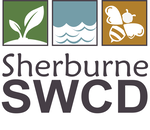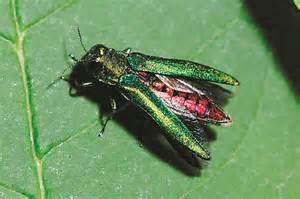Urban Forestry Program
|
A diverse community forest is far less susceptible to devastation by pest or disease that affects a single type of tree. Selecting a wide variety of trees native to specific areas of Minnesota and providing proper care helps ensure that replacement trees will be strong and healthy, while reducing vulnerability to forest pest invaders in the future. Communities increase their tree maintenance costs by planting only a few types of trees.
The Sherburne County Urban Forestry Program was started in 2012, stimulated by the impending threat of the Emerald Ash Borer. Its is facilitated through the Sherburne SWCD and consists of a committee made up of representatives from cities of Elk River, Big Lake, Becker, Princeton and Zimmerman. With most people living in urban areas it becomes vitally important to implement conservation practices that help protect our trees and minimize our impacts on the natural environment. Urban forestry is the careful care and management of urban forests, i.e., tree populations in urban settings for the purpose of improving the urban environment. Urban forestry advocates the role of trees as a critical part of the urban infrastructure. Urban foresters plant and maintain trees, support appropriate tree and forest preservation, conduct research and promote the many benefits trees provide. Many of these practices work to reinstate and mimic the natural systems that were functioning prior to the land being developed; such as mitigating stormwater runoff and reducing the urban heat island effect. The Sherburne SWCD can assist urban landowners in identifying conservation opportunities and ideas on mitigating environmental concerns. Please contact David at 763-280-7518 to find out more.
|
Gravel Bed
Community Tree survey
Several communities in Sherburne County have worked with the SWCD to preform a community tree survey. Volunteers in each community receive training and are equipped with tools and maps to complete the survey. Data is collected on every maintained, public and private tree within the city limits, including species, trunk diameter and crown diameter. This detailed inventory can be used to formulate effective management plans for tree care in each community. The inventory results will help guide future planting as the city strives to increase diversity. Presently, nearly half of the trees within the city are made up of only three tree genera: maple, ash and spruce. Understanding the tree population and its differing species will help managers prepare for possible catastrophic events. View community tree survey results here. EAB preparedness plan
Emerald ash borer (EAB) is a devastating wood-boring tree pest that has killed millions of trees in the eastern and central U.S. While EAB is all but impossible to eradicate once it arrives in an area, well-planned response efforts can slow its spread and reduce the impact on community forests. A response plan is important because it provides a community with the opportunity to plan ahead to spread the costs and losses associated with the impacts of EAB. Additionally it provides options that best fit their specific needs, resources, structure and authorities. The SWCD has worked with Sherburne County Communities to create a tailored response plan for EAB. The template for this plan was modeled after plans developed by communities affected by EAB.
EAB Preparedness Plans: Elk River Zimmerman Princeton community forest diversification program
A diverse community forest is far less susceptible to devastation by pest or disease that affects a single type of tree. Selecting a wide variety of trees native to specific areas of Minnesota and providing proper care helps ensure that replacement trees will be strong and healthy, while reducing vulnerability to forest pest invaders in the future. Communities increase their tree maintenance costs by planting only a few types of trees. The Sherburne County Urban Forestry Program was started in 2012, stimulated by the impending threat of the Emerald Ash Borer. Its is facilitated through the Sherburne SWCD and consists of a committee made up of representatives from cities of Elk River, Big Lake, Becker, Princeton and Zimmerman. |

